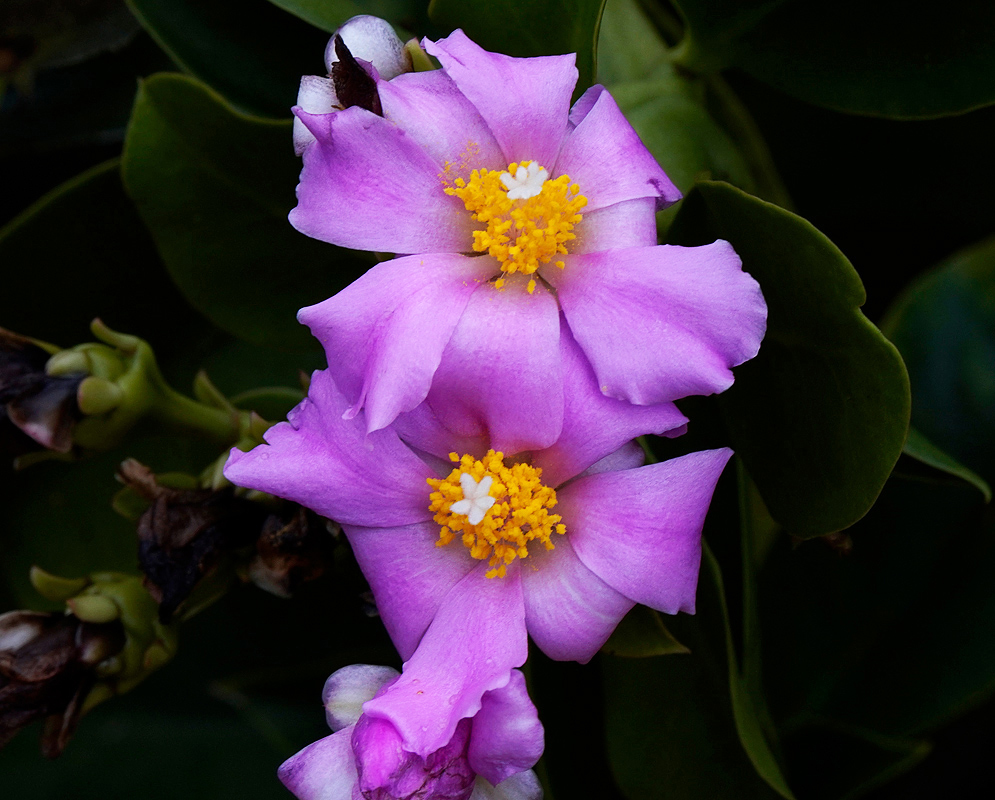This post has 11 Simple Fields-fields attached. Show fields.

Native to the tropical regions of eastern Brazil, Pereskia grandifolia, commonly known as rose cactus, is a unique species that diverges from typical cacti by retaining broad, fleshy leaves and a shrubby or small tree habit, often reaching heights of 6 to 16 feet with a rounded crown. This plant produces showy pink to purplish-pink flowers, each approximately 2 inches in diameter, featuring five petals and a central cluster of yellow stamens, which bloom in terminal clusters. The flowers are followed by fleshy, pear-shaped fruits that mature to yellow, red, or green hues. The leaves are edible and can be consumed raw in salads or cooked, offering a slightly tart flavor, and are utilized in traditional Brazilian medicine for their purported anti-inflammatory properties. The plant exhibits drought tolerance once established. Propagation is typically achieved through stem cuttings, which root readily under appropriate conditions. Notably, Pereskia grandifolia is considered an ancestral form of cacti, providing insight into the evolutionary transition from leafy plants to the more familiar leafless, succulent cacti, and its unique combination of broad leaves and spines.

